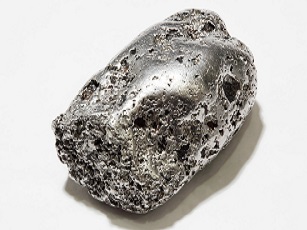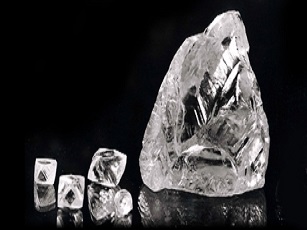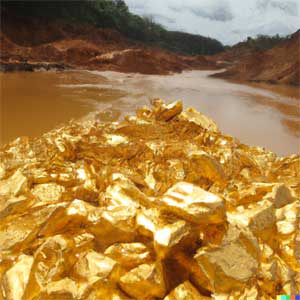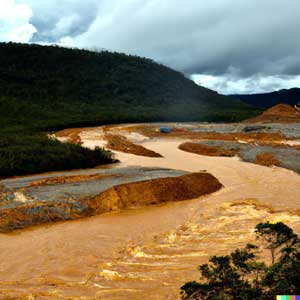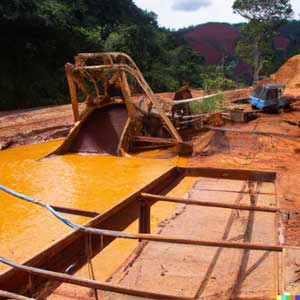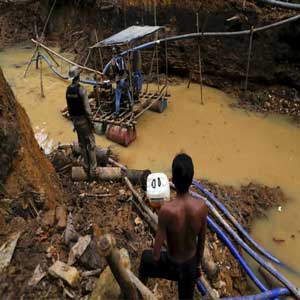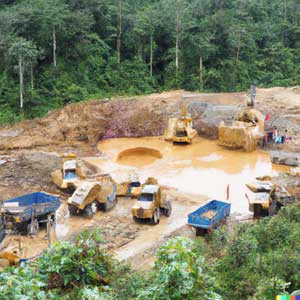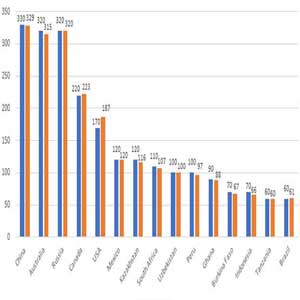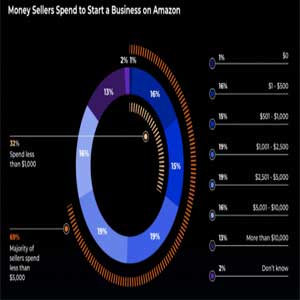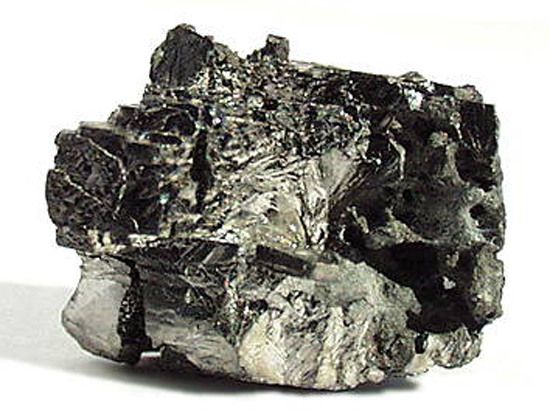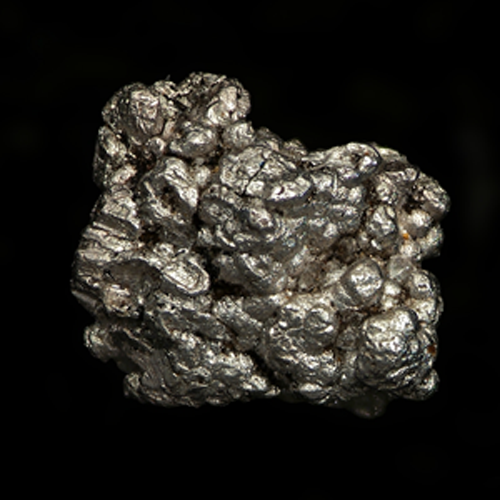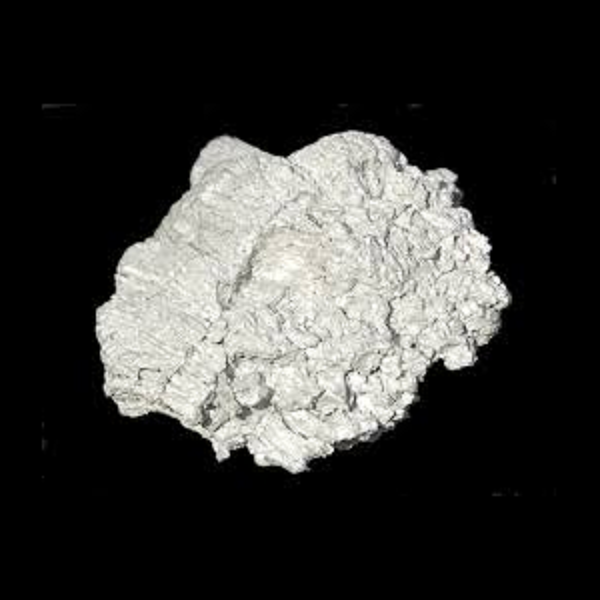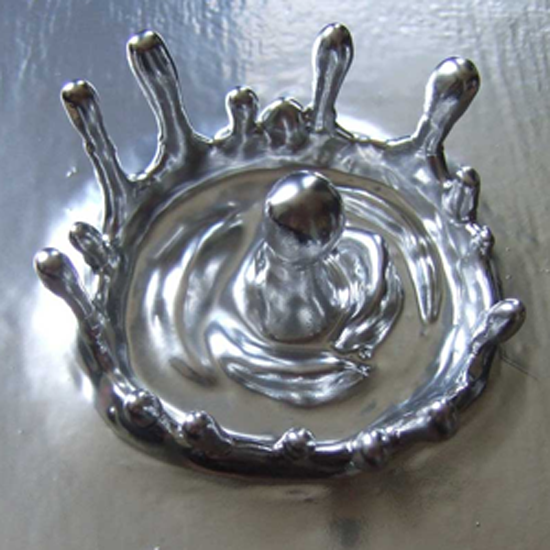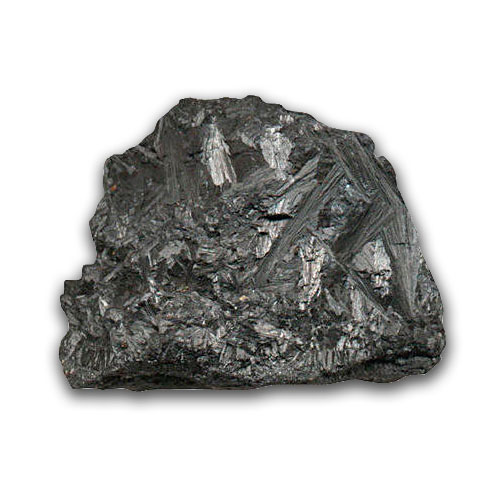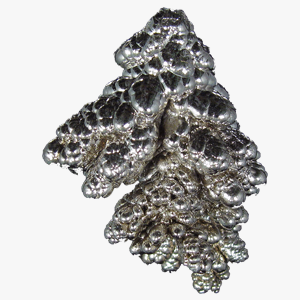Gold Mining in Amazon
GOLD MINING IN AMAZON:
Gold mining in the Amazon basin is a complex and difficult operation due to the remoteness and inaccessibility of much of the region. Mining operations in the Amazon are largely small-scale operations, often run by independent prospectors. These small-scale operations typically use simple techniques such as dredging, surface mining, and panning for gold in rivers and streams. However, industrial-scale gold mining operations are found in some parts of the Amazon. These operations use large-scale equipment such as excavators and bulldozers, and employ advanced methods such as hydraulic mining and chemical leaching. In addition to the environmental destruction caused by these large-scale operations, they also pose a threat to the traditional lifestyles and cultures of indigenous peoples living in the Amazon.
AMAZON RIVER IN GOLD MINING :
The Amazon River is not a major site for placer mining. Placer mining is typically done in areas with a large concentration of minerals, such as gold, that can be found on or near the surface of the Earth. The Amazon River is not known to have any significant placer deposits of gold or other minerals.
WHAT MINERALS ARE FOUND IN THE AMAZON RAINFOREST:
The Amazon rainforest is home to a variety of minerals including gold, bauxite, iron ore, manganese, copper, tin, lead, zinc, and nickel.
WHAT METALS MINED IN AMAZON :
The Amazon region is known for its gold, copper, and iron ore deposits. Other minerals that have been found in the region include bauxite, coltan, diamonds, and tin.
AMAZON GOLD MINING PROCESS :
1.The process of gold mining in the Amazon is typically done by large-scale operations and is very labor-intensive. First, prospectors use metal detectors and sluice boxes to search for gold-bearing deposits in rivers and streams. Once a promising area is identified, a claim is registered and a camp is established.
2.Next, miners must clear land and dig trenches. This is usually done with hand tools like shovels and pick axes. The mined land is then sluiced with a variety of machines, such as high-pressure hoses and suction dredges. This process separates the gold from the sediment, which is collected in sluice boxes.
3. The gold-bearing sediment is then panned, which involves agitating and swirling the sediment in a pan to allow the heavier gold particles to settle to the bottom. The gold particles are then collected and sent to a refinery, where the gold is melted down and purified.
4.Once the gold has been refined, it can be sold on the open market. The profits from gold mining operations finance the equipment, wages and other expenses associated with the process.
HOW IS GOLD MINED IN THE AMAZON :
Gold is mined in the Amazon mainly by small scale miners using placer mining techniques, such as sluice boxes, to extract the precious metal from riverbeds and banks. This type of mining is particularly common in the Madre de Dios region of Peru, where up to 20,000 small-scale miners are estimated to be extracting gold from the Amazon basin. The miners use a variety of methods, such as diverting water from rivers to expose riverbeds and dredging, to find and extract gold from the sediment. The sediment is then collected and separated from the gold by sifting through it with handheld sieves. The gold is then melted down to form bars and sold for a profit.
The use of mercury, a highly toxic element, to separate the gold from the sediment is a common practice in the Amazon. Mercury is mixed with the sediment and the gold-mercury amalgam is then heated to evaporate the mercury and leave the gold behind. This process, however, releases mercury into the environment, which can have devastating environmental and health impacts. In response, many governments in the Amazon have implemented regulations to limit the use of mercury in small-scale mining operations.
AMAZON GOLD MINING TYPES :
1. Placer Mining: Also known as surface mining, placer mining is used to extract gold and other minerals from riverbeds, beaches, and other sedimentary deposits. This type of mining is typically done on a small scale, and is most common in areas with abundant gold deposits, such as the Amazon Basin.
2. Hard Rock Mining: Hard rock mining is used to extract precious metals such as gold, copper, and silver from underground ore bodies. This type of mining is usually done on a large scale and requires heavy machinery to dig deep into the earth.
In Peru, gold mining in the Amazon has been taking place since the Incan Empire and is still an important economic activity today. The country is the second-largest gold producer in the Amazon and the majority of gold production comes from small-scale operations.
3. Strip Mining: Strip mining is used to extract minerals and metals from the top layers of soil. This type of mining is often used in areas with large deposits of valuable minerals, such as in the Amazon Basin.
4. Hydraulic Mining: Hydraulic mining is used to extract gold and other minerals from the bed of a river or stream. This type of mining uses high-pressure streams of water to loosen and break up the rocks, which are then collected and processed for their precious metals.
TOP GOLD PRODUCING COUNTRIES :
Gold mining in the Amazon is an important economic activity in some countries, primarily Brazil, Peru, Suriname, and Guyana.
* In Brazil, gold mining has been taking place since the 1700s and is the largest producer of gold in the Amazon. Most of the gold production in Brazil comes from the country's vast placer deposits, which are located in the Amazon basin. The majority of gold mining operations in the Amazon are informal, and use basic equipment such as sluices and small gravity separators.
* In Peru, gold mining in the Amazon has been taking place since the Incan Empire and is still an important economic activity today. The country is the second-largest gold producer in the Amazon and the majority of gold production comes from small-scale operations.
* In Suriname, gold mining has been an important economic activity since the 1700s and is still an important contributor to the country's GDP. The majority of gold mined in Suriname comes from small-scale operations, although some large-scale operations exist.
* In Guyana, gold mining is an important economic activity, with the majority of production coming from small-scale operations. Most of the gold production in Guyana is derived from alluvial deposits and placer mining.
* In Colombia, gold mining is an important economic activity, although it is largely informal. Most of the gold production in Colombia comes from small-scale operations, although there are some larger-scale operations as well.
* In Ecuador, gold mining is an important economic activity, although it is largely informal and uses basic equipment such as sluices and gravity separators. Most of the gold production in Ecuador comes from small-scale operations.
ANNUAL GOLD USAGE:
GOLD PRODUCTION IN THE WORLD :
Gold production in the world in 2022 is projected to rise to a record high of nearly 4,000 tonnes. This would represent an increase of 6.7% from the estimated production level in 2021. The increase in gold production is expected to be driven by higher demand and increased mine production from countries such as China, the United States, and Australia. China is expected to lead the pack with a projected gold production of 1,000 tonnes in 2022, an increase of 11.4% from 2021. The United States and Australia are expected to follow with estimated gold production of 500 tonnes and 350 tonnes respectively. In addition to increased mine production, gold recycling is expected to contribute to a significant portion of the world's gold production in 2022. Gold recycling is estimated to account for about 22% of total gold production in 2022, an increase of 5.2% from 2021. Overall, the world's gold production in 2022 is expected to reach a record high of nearly 4,000 tonnes, a 6.7% increase from 2021. China is expected to lead the way with an estimated gold production of 1,000 tonnes, followed by the United States and Australia with 500 tonnes and 350 tonnes respectively. Gold recycling is also expected to contribute to a substantial portion of the world's gold production in 2022.
(metric tonnes) |
||
Related Mining

